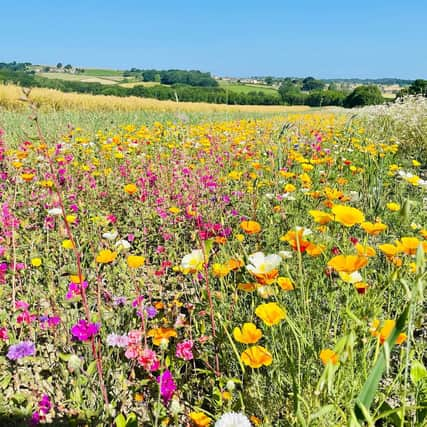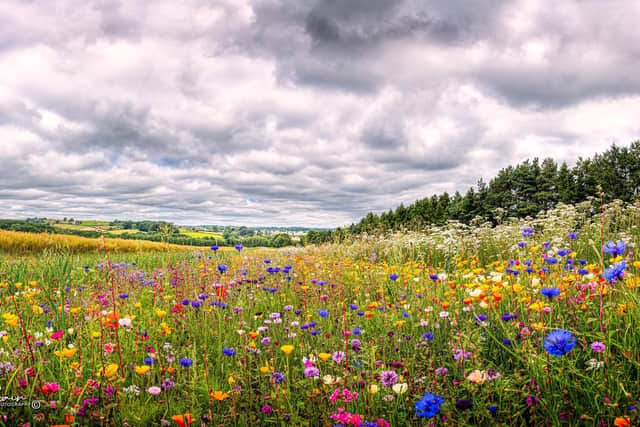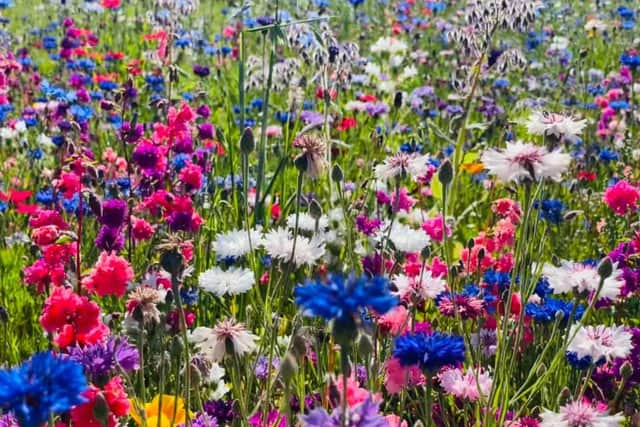Stunning photos show how Derbyshire farmers are planting wildflowers to encourage pollinating bees and butterflies


Mike Swain, 76, said on social media: “It's really good to see a couple of the local farmers creating strips of wildflowers on the edges of their fields. This one seemed to go on forever.“Strips like these are great to look at and photograph but they're so important for all the pollinating insects that visit the fields. The one I visited was full of bees and other insects too.”
Mike, who lives in Clay Cross, was delighted to see that his photo was one of 500 chosen by the Flickr platform for its Explorer page out of the 3.5 million photos that are uploaded worldwide every day.
Advertisement
Hide AdAdvertisement
Hide AdHe recently won Matlock Photographer of the Year and won the Matlock Bath Pro Loco competition two years ago.


Claire Evans and her boyfriend were on the way home to Nottingham from staying in their caravan in Edale when Claire spotted the flowers in the field and took photos of them. She said: “It was just so pretty, and full of bees and butterflies.”
Richard Bunting, spokesman for Rewilding Britain, said: “Every wildflower that is planted or allowed to grow can be a pit-stop that can save a bee. Bumblebees are having a really hard time, and their numbers have crashed over recent decades. Some species have even gone extinct. A major reason for this is loss of habitat, with 97% of Britain's wildflower meadows having been lost in living memory. Because bumblebees can only fly for about 40 minutes between feeding, every patch of wildflowers or nectar-rich plants that we add to the landscape makes a real difference to the survival of these wonderful pollinating insects.
"The simple fact is that wildflower meadows – and mini-meadows in our communities and gardens, whether they are planted or simply allowed to grow by not over-mowing and definitely not using weedkiller – can help save the sound of summer.
Advertisement
Hide AdAdvertisement
Hide Ad"All of this is important for us too. Bumblebees are one of our most important pollinators, and their hard work pollinates many of our favourite fruit and vegetables like strawberries, tomatoes and peas. Losing them would be disastrous.


"Bringing wildflowers back into our landscapes, farmland, communities and gardens benefits all sorts of other wildlife too. On top of that, banks of wildflowers look amazing and can help us all reconnect with nature – something that is hugely beneficial to people's mental and emotional health and wellbeing."
Richard is also director of the environmental project Little Green Space, which is a partner in the Bumblebee Conservation Trust's four-year Pollinating the Peak project. The collaborators are working to ensure a better future for bumblebees in Derbyshire and the Peak District, through habitat creation, education work with schools, monitoring bees and raising awareness about the importance of the insects.
For easy tips on helping bumblebees and other species or for further information, go to http://littlegreenspace.org.uk